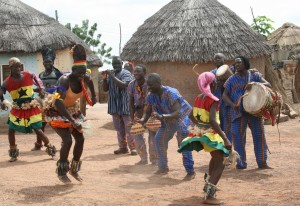 * Africa comprises of 54 independent nations (13:22)
* Africa comprises of 54 independent nations (13:22)
* Africa’s population – 1.1 billion
* Due to rapid population growth in the continent over the last 40 years, its general population is relatively young. In many African states, more than half of the population is under the age of 25.
* The primary region of Africa is often called sub-Saharan Africa and excludes the mostly Islamic countries of North Africa: Western Sahara, Morocco, Algeria, Tunisia, Libya, and Egypt. Sub-Saharan Africa includes 42 nations on mainland Africa and the six island nations.
* Arabic (in various dialects) is the most common language spoken in Africa with about 170 million speakers, primarily residing in North Africa. In the continent as a whole, there are over 2,000 recognized languages spoken.
* Nigeria is the most populous country in Africa, with an estimated population of 171 million people. Egypt is the second most populous country with over 85 million people.
* The largest country in Africa is Algeria with a total area of 967,490 square miles (2.5 million square kilometers). The smallest country is the island nation of The Seychelles with a total area of just 175 square miles (453 square kilometers).
* Population experts estimate that there are at least 3,000 distinct ethnic groups (tribes) in Africa. Nigeria alone has more than 370 recognized tribes within its population.
* Africa’s growing middle-class represents around a third of its total population. In 2013, the African Development Bank estimated that Africa’s middle class reached more than 300 million in 2008, amounting to a third of the continent’s population, or about the same size as its Chinese and Indian counterparts. Africa’s middle class is expected to grow from 300 million (33 percent of Africa’s population) to 1.1 billion (42 percent of the population) in 2060 (AfDB,2011)
* Africa’s top 18 cities have a total spending power of US$1.3 trillion.
* Consumer spending by the middle class reached an estimated quarter of Africa’s GDP of $3,359 billion in 2012. By 2030 this figure will likely reach $2.2 trillion, although Africa will still only comprise about three percent of worldwide consumption, according to a paper by the European Centre for Development and Policy Management.
* Currently, there are two competing narratives on Africa. One is a story of modernisation, growth and global integration. It is the story of street traders with smartphones; new cities and skylines; factories supplying the likes of Cadburys, Unilever and Walmart; and multinational Western companies – from Google to General Electric. The second story is one of poor governance, conflict, poverty, and marginalization, underdevelopment.
* There is still a huge divide between rich (five percent in 2008) and poor (62 percent in 2008) in Africa. The middle class is not big enough (33 percent in 2008). About 100,000 of the wealthiest Africans have a collective net worth amounting to 60 percent of the continent´s GDP, according to the AfDB, citing 2008 figures.
* Nigeria will leapfrog Egypt into second place behind South Africa, with Kenya in fourth place, in New World Wealth’s projected 2030 ranking of African countries by dollar millionaires. Millionaires in Ghana will triple by 2030 with an advance of 144 percent in Angola, according to the New World Wealth report (2013). The number of high-net-worth individuals in Ethiopia, which grew the fastest over the past six years, will almost triple to 7,900 by 2030 amid a privatisation programme, according to the European Centre for Development and Policy Management.
